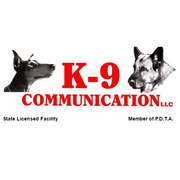
Since furry family members can’t verbally express emotions, you have to assess their body and vocal language to understand them. However, with various emotional cues to follow, reading your dog is often easier said than done. To help you better understand what your special friend is trying to communicate, here are three key ways to decipher dog body language.
3 Ways to Understand Dog Body Language
1. Understand Your Dog’s Base Needs
Dogs use a combination of body language and vocal cues to express three basic things: stress, need, or the desire to play. Common signals of stress include a stiff tail and sharp, piercing barks. If your dog has a specific need, they’ll often be highly persistent, potentially leading you physically to the thing it is looking for. Playfulness, on the other hand, is often shown through romping, tail wagging, and more relaxed body language.
2. Focus on Tail Positioning
If you’re ever wondering what your dog is feeling, pay attention to the tail, as its positioning can communicate a great deal. While many people know that a wagging tail is evidence of a happy dog, it can also signify overstimulation or frustration. A low tail, on the other hand, can signify submission; if it’s tucked between the legs, it’s often a sign of anxiety or fear. A straight, upright tail commonly connotes aggression, particularly when combined with barred teeth or a low growl. A gently swaying or curled tail generally means your dog is feeling relaxed and confident.
3. Listen for Vocal Cues
 Dogs will often make sounds in relation to their body language to communicate a message. Barking can be used to communicate much more than dog owners may realize, from a sound of alert or distress to boredom or the desire to play. Demanding or distressed barks are often sharp and persistent, whereas barking from boredom is more playful and relaxed. Low growls are used to demonstrate dominance and aggression, such as warding off a perceived intruder. A raspy panting noise is often the result of a nervous dog. If you’re ever unsure what a sound means, study the body language to see if it’s relaxed or tense.
Dogs will often make sounds in relation to their body language to communicate a message. Barking can be used to communicate much more than dog owners may realize, from a sound of alert or distress to boredom or the desire to play. Demanding or distressed barks are often sharp and persistent, whereas barking from boredom is more playful and relaxed. Low growls are used to demonstrate dominance and aggression, such as warding off a perceived intruder. A raspy panting noise is often the result of a nervous dog. If you’re ever unsure what a sound means, study the body language to see if it’s relaxed or tense.
If you’re having difficulty understanding your dog and need an experienced dog trainer, put your trust in K-9 Communication in Milford, CT. With nearly 35 years of experience, owner Gus Marnel has trained thousands of dogs using proven techniques. From puppy training to obedience training, all training is guaranteed for the life of the dog. To set up a free consultation, give them a call at (203) 874-7299 or visit them on their website, Facebook, or Google+ for more information about their techniques.
About the Business
Have a question? Ask the experts!
Send your question

